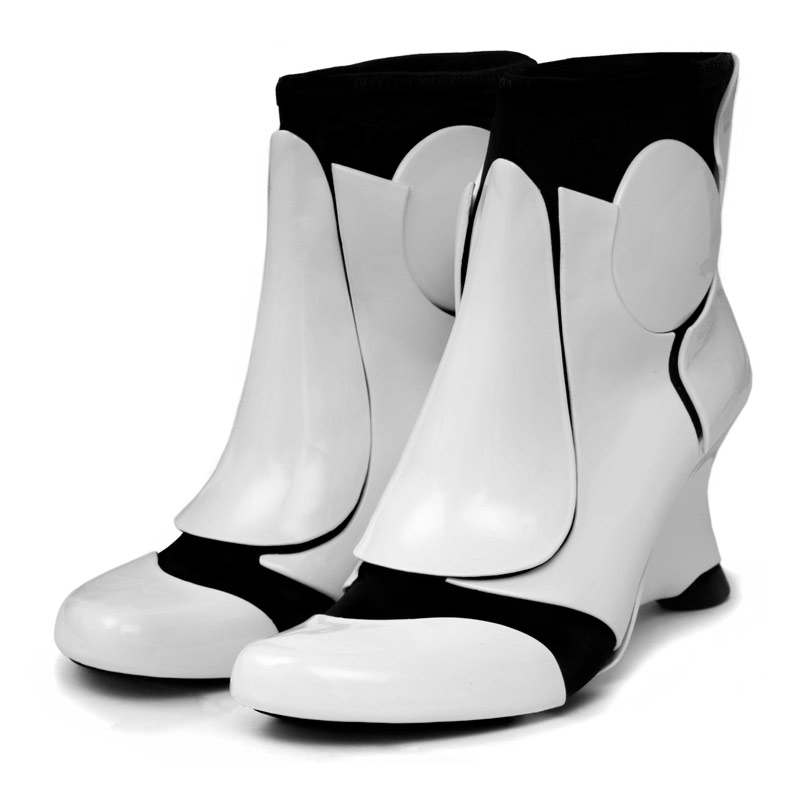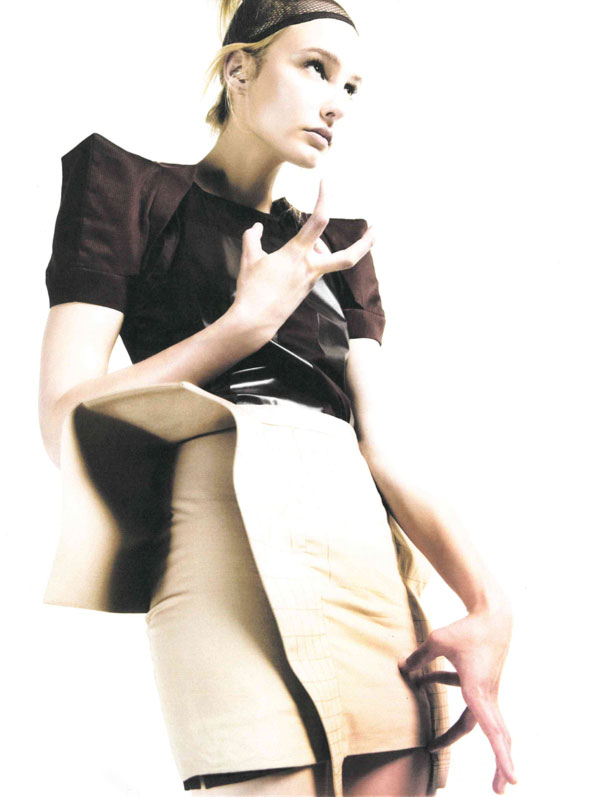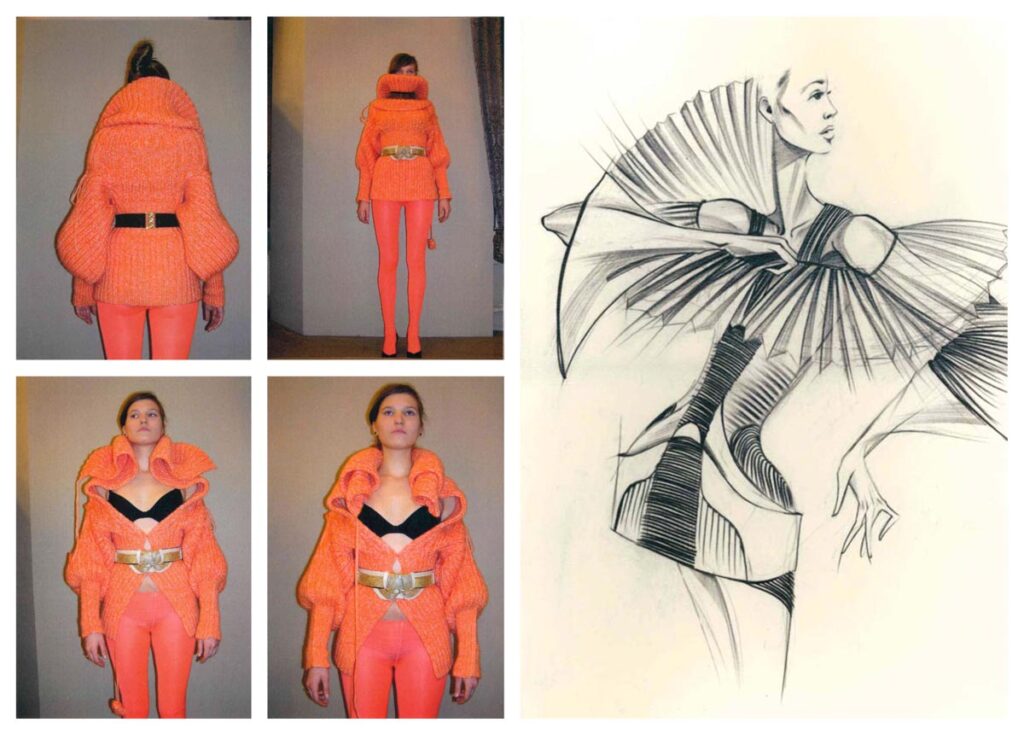
ITS Contest names that ring a bell.
Craig Green, David Koma, Liam Fahy and Lee Matthews in the ITS Arcademy Collection.
01 January 2023
In the history of contemporary fashion, documented through the perspective of the ITS Arcademy Collection, there are designers who made history. Interestingly, it’s not always names that made it through to the finals. Perhaps because their talent was still too raw when they applied, or maybe because the jury was unable to understand their creativity by just flicking through the pages of their portfolios. We have some interesting stories to share, in our collection.
Craig Green is the first that comes to mind. He established his namesake brand straight out of his MA course at Central Saint Martins in 2012. Firing a career that has already left and indelible mark in the industry. From his experimentations with Moncler Genius to designing costumes for Ridley Scott’s “Alien: The Covenant”, Green has added an entirely new perspective on menswear. The first time we met him was back in 2010, during his BA. We were visiting schools around the world to interview students and view their projects, and he introduced us to the collection he was working on, a project influenced by American and English cultures and referencing class, money, patriotism, D.I.Y., nature, Native Americans and hunting. Kind of surreal hunter gatherers living the great outdoors. Instantly we knew, we had met with talent. Regrettably, the jury did not share our sentiment.
History repeated in 2012, with his MA Central Saint Martins collection. He applied with a project that drove strong inspiration from religion, cults and utilitarian workwear, providing a glimpse of the universe he would further on with his own brand. It was the beginning of his obsession with clothing intended as a uniform, and as a possibility for dramatic installations.
Fortunately both portfolios documenting the collections are housed in the ITS Arcademy Library. They represent a reminder of how contest selections can be brutal, leaving out projects that undoubtedly deserved the stage, developed by unique designers.


The same can be said of Liam Fahy, a footwear prodigy we literally ran after back in 2011, betting on a creative talent that established itself without the need for the visibility and support provided by ITS. Liam had a background in art and psychology when he decided to follow his passion for shoes and harness his creativity at De Monfort University in England. Unquestionably an enfant prodige, he was winning awards while still at school: in 2008 Manolo Blahnik and Colin McDowell handed him the Fashion Fringe Accessories Award, thanks to his “I-Ashi Bionicus” shoe, a limited edition concept inspired by Chris Cunninham’s music video for artist Bjork.
The collection he applied for ITS Contest in 2011 was based on elegance and silhouette rather than an overriding novelty idea. The idea underpinning his design philosophy is that often a designed accessory exaggerates an idea or singular concept at the sacrifice of style and simplicity, rendering the piece unattractive and unwearable. A shoe collection worked on beautiful minimalistic silhouettes and lines that highlighted an understanding of an entire outfit instead of the stand alone accessory. He had used low cut lines to highlight the shape of a woman’s foot, slight platforms to raise posture, ankle straps to reveal the leg and ankle, and 105mm heels to curve the foot. The soles, fastenings and details made from nickel were inspired by the metal-smith work of the early 16th century armour and jewellery. A subtle marriage between solid metal and soft leather that became a signature style for his brand: each lettered stud of the logo under the sole is individually attached to highlight hand craftsmanship and quality instead of mass production and repetition.

Formerly an illustrator and art director for Vogue Australia, Lee Matthews turned to clothes from her own kitchen table, when she began developing garments for herself and her friends. This is where she developed into one of the most recognised Australian brands, praised for its core philosophy to “make good things”, successfully “designing clothes that resonate deeply with people’s lives, clothes that are functional and beautiful, ageless and simple”.
The “Tesseract” collection she applied with for ITS Contest in 2008 involved a radical cubist vision of the human body. Seeking to transform the two-dimensional into dynamic three-dimensional shapes, the garments abstracted the contours of the body, utilising voids between the skin and cloth, to create alternate structures that referenced the forms, conceptual strategies and techniques of contemporary paper folding artists. Examining unexpected expressions of physical space, Lee instilled a unique spatial awareness, refashioning the relationship between subject and object, and questioning preconceived notions of the body’s boundaries and its logical associations. The collection also explored the arena of architectural surface decorations with paper layering, pleating and printing, all providing aesthetic complexities meant to create textural cadences and sculptural surface patterning.

London-based designer David Koma graduated with a distinction in MA Fashion in April 2009 under the mentorship of the late Professor Louise Wilson, OBE. We had interviewed David at Central Saint Martins in 2008, when his signature style was its early days. It would become synonymous with the ultra body-contouring silhouette, creating sculptural statement dresses inspired by the feminine form. David – who discovered his penchant for dress design at the very young age of eight – would catch up with his predestination right out of school, launching his own line, including a 4-year stint as creative director at Mugler (2013 – 2017).
The ITS Arcademy library hosts two application projects by Koma. The first, inspired by the brother Grimm’s fairy tale “Rapunzel”, exploring the relationship between man and woman by mixing men’s classical and military suits with the female elegance of the wedding dress. In his following ITS application traits from the future career that awaited such a talent could be seen. It was all about extremes: Helmut Newton vs Rusudan Petviashvili, Julia Roberts vs Grace Jones, Femininity vs Power, Mugler vs Jacques Fath, Sexuality vs Innocence… His fascination for the contours of the human body, for the flesh, literally took shape here, inspired by quotes from sociologist Klaus Theweleit (“The Contours of the flesh, being highly variable, can be manipulated in a number of ways”), author Julia Emberley (“The interface between the self and the world’s face is the surface of the body, its flesh”) and William A. Ewing (“We are left to wonder if in the end the human spirit can ever find comfortable accommodation with the flesh”).

The above are wonderful examples of the treasures stored in the ITS Arcademy Library, a 14,000+ collection of portfolios applied for the contest in these past twenty years. A unique historical testimony of fashion’s endless creative iterations, accessible to everyone when we open our doors soon.